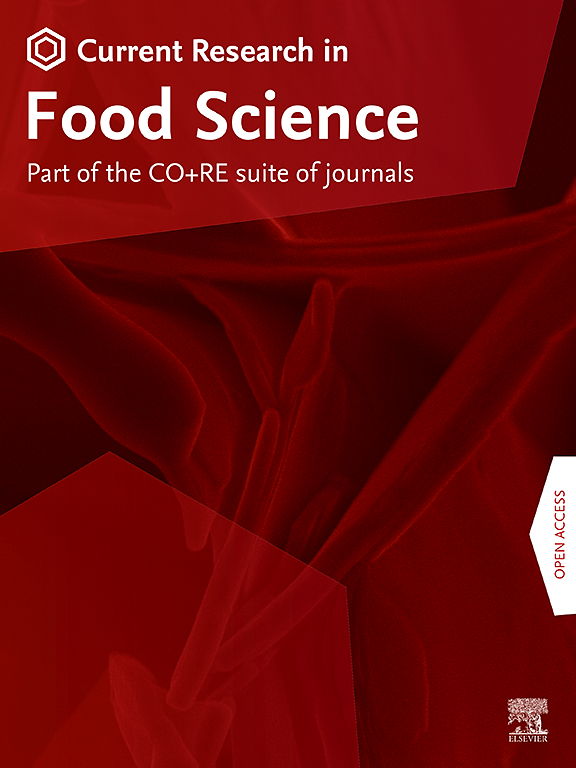Mechanism of L-arginine improving the macroscopic and microscopic qualities of Acipenser schrenckii surimi gel under low-salt conditions and microwave irradiation: Significance of moisture migration and distribution
IF 6.2
2区 农林科学
Q1 FOOD SCIENCE & TECHNOLOGY
引用次数: 0
Abstract
This study explored the mechanism by which L-arginine (L-Arg) enhanced the characteristics of low-salt sturgeon (Acipenser schrenckii) surimi gels under microwave (MW) irradiation, focusing on the changes in the distribution and migration of water molecules. The findings indicated that L-Arg shortened the gel formation time from MW 3 min to MW 2 min. Moreover, the addition of 2% L-Arg optimized the gel properties, achieving the highest water holding capacity (83.24%), resilience (48.34 cm), and cohesion (0.80) at MW 3 min (P < 0.05). Additionally, cryo-scanning electron microscopy showed that the fractal dimension and porosity of the gel network enhanced and decreased, respectively, with the increasing content of L-Arg. These improvements in macroscopic and microscopic qualities were related to the transformation of free water into immobilized water and the more uniform distribution of hydrogen protons under the MW irradiation promoted by L-Arg, as demonstrated by the magnetic resonance imaging and Pearson correlation analysis. This study provided novel insights into overcoming the challenges associated with MW processing in surimi products.

低盐条件和微波辐照下l -精氨酸改善施伦氏鲟鱼糜凝胶宏观和微观品质的机理:水分迁移和分布的意义
本研究探讨了l -精氨酸(L-Arg)在微波(MW)照射下增强低盐鲟鱼(Acipenser schrenckii)鱼片凝胶特性的机制,重点研究了水分子分布和迁移的变化。结果表明,L-Arg的加入使凝胶形成时间由mw3min缩短至mw2min。此外,2% L-Arg的加入优化了凝胶的性能,在mw3min时达到了最高的持水量(83.24%)、回弹性(48.34 cm)和内聚力(0.80)(P <;0.05)。低温扫描电镜显示,随着l -精氨酸含量的增加,凝胶网络的分形维数和孔隙度分别增大和减小。磁共振成像和Pearson相关分析表明,这些宏观和微观品质的改善与L-Arg在MW照射下将自由水转化为固定化水以及氢质子分布更加均匀有关。这项研究为克服鱼糜产品中MW加工相关的挑战提供了新的见解。
本文章由计算机程序翻译,如有差异,请以英文原文为准。
求助全文
约1分钟内获得全文
求助全文
来源期刊

Current Research in Food Science
Agricultural and Biological Sciences-Food Science
CiteScore
7.40
自引率
3.20%
发文量
232
审稿时长
84 days
期刊介绍:
Current Research in Food Science is an international peer-reviewed journal dedicated to advancing the breadth of knowledge in the field of food science. It serves as a platform for publishing original research articles and short communications that encompass a wide array of topics, including food chemistry, physics, microbiology, nutrition, nutraceuticals, process and package engineering, materials science, food sustainability, and food security. By covering these diverse areas, the journal aims to provide a comprehensive source of the latest scientific findings and technological advancements that are shaping the future of the food industry. The journal's scope is designed to address the multidisciplinary nature of food science, reflecting its commitment to promoting innovation and ensuring the safety and quality of the food supply.
 求助内容:
求助内容: 应助结果提醒方式:
应助结果提醒方式:


